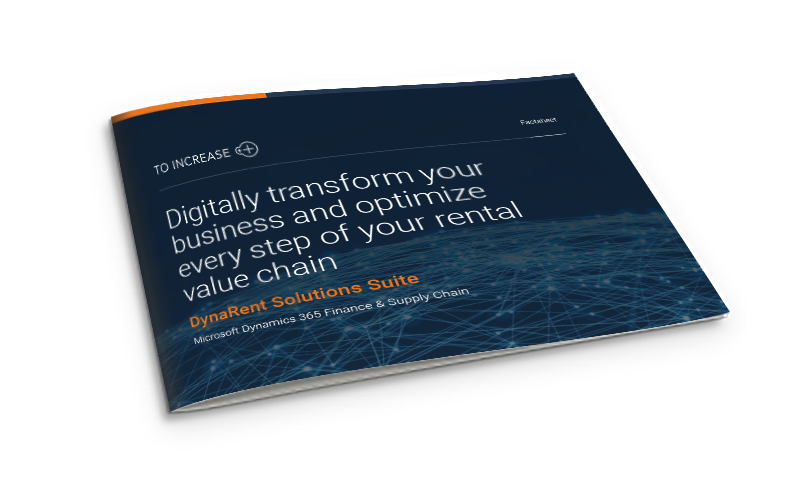The increasing popularity of international containerized seaborne trade and intermodal freight transportation have fueled the growth of the container rental and lease industry. The container leasing market is expected to grow at a CAGR of 16.52% by 2027, and the worldwide container storage and rental market is anticipated to become a multimillion-dollar industry by 2028.
With such spikes in demand for container rentals, the industry foresees a new set of challenges, which must be addressed to stay relevant and competitive in the niche market.
Having been in the rental industry for nearly two decades, we at To-Increase have interacted with many container rental businesses and are all too familiar with their key challenges.
This article shares some of the biggest challenges of the container rental industry and how to stay ahead of them.
Top 10 challenges of the container rental market
1. High transportation expenses
Rental containers (storage or moving) are bulky and heavy, which makes transportation costs a significant challenge. Moving containers require transportation to and from the customer's location. In some cases, the transport cost can be higher than the cost of the container itself.
Additionally, transporting containers over long distances or across international borders can be particularly expensive.
2. Legal and regulatory compliance
State and local governments regulate the container rental market, which varies widely. Apart from the ISO standard for global shipments, there are no national organization standards, making it challenging.
Container companies are subjected to various legal and regulatory issues, such as zoning laws and safety regulations. You must comply with the relevant local laws and regulations to avoid penalties or other legal problems.
3. Maintenance and repair costs
Containers require regular maintenance and repairs to ensure they are in good condition. Maintenance and servicing, when not done on schedule, present a significant expense for container rental companies with large fleets.
Most rental containers are made from steel, a non-renewable resource with a significant carbon footprint, making it even more crucial to maintain them in a sustainable manner.
4. Meeting safety codes and data security
Rental containers are often used to store or ship valuable goods and equipment, which makes personnel safety and data security a top priority. As a container rental company, you must decrease cargo vulnerability and ensure that the containers do not risk injury to your customers.
This is especially true for moving rental containers that are heavy and difficult to maneuver, making on-site safety critical. Also, dealing with multiple stakeholders brings about high volumes of sensitive information, and any data breach risks liability issues.
5. Ineffective cost-management
Without an efficient cost-management system, you cannot determine the total costs of a single container rental. There are several costs, such as proper documentation, legal work, preparing the containers for shipment, terminal space for storage, maintenance, fuel utilized, and transportation costs.
With no unified data on the freight details, you are unable to accurately quote your customers or monetize value-added services (such as guaranteed delivery times or safety), losing out on critical revenue streams.
6. Monitoring asset availability
Container rentals are in high demand during peak moving seasons, making it difficult for you to keep track of container availability. You must prevent overbooking or double booking, as customers need to move their cargo on a specific date with tight schedules.
Not delivering the containers on time or lacking responsiveness to customer inquiries throughout the moving process can lead to negative customer feedback that could affect the business’s reputation.
7. On-site storage costs
When rental containers are constantly moving among different customers and geographies, there are periods in between when the container is not directly available for the next rental period. In such situations, the containers must be stored on the transportation site — the shipping port or the train station.
This increases the container storage cost as you pay for on-site space usage. During the unused time, the container also needs to undergo basic maintenance checks, adding more expenses of sending/hiring field technicians to work on the containers on-site.
8. Revenue management with multiple investors
As a container rental company, you may not own all the containers you rent out. Some containers may be sub-rented from third parties or external investors, and you execute the operational and financial transactions.
Shared stake complicates revenue management as you must build revenue-sharing models based on the agreement, percentage of ownership, stake, business contribution, and several other factors to calculate profits and revenue accurately.
9. Underutilization of container rentals
Container rentals require heavy capital investments throughout the year. However, in some instances, containers are moved empty due to trade imbalances. This empty container repositioning is a movement cost that burns a hole in your shipper’s pocket and causes underutilization of your containers.
Empty shipping of container rentals results in conflicts between you and your transportation company, as large finances are involved throughout the process, making it detrimental to your business.
10. Volatility and competition in the market
Container rental and leasing rates heavily depend on global steel prices, generally used to manufacture shipping containers. This means changes in steel prices directly impact the cost of manufacturing and renting a container.
The container rental market is highly competitive, with many companies fighting for market share. With new entrants joining, the market is becoming increasingly crowded, leading to price wars. For instance, the new ultra-large container ships have impacted smaller ships carrying containers, affecting the overall industry.
How can container rental companies address these challenges?
Container rental companies, whether renting out storage or shipping containers, dry or reefer containers, deal with a diverse set of stakeholders with multiple parallel processes.
While some challenges, such as regulation and compliance, are operational and could be addressed based on your business and region, most of the above-discussed challenges can be solved with the right technology in place.
You can follow these steps to begin addressing your business challenges:
i) Consolidate operations
Having all your operations, be it finance, human resources, supply chain, marketing, administration, etc., as standardized processes on one source of truth is a way to start. Use a single technology platform and eliminate multiple siloed software systems to avoid complex integrations and missed data.
ii) Digital transformation
Digitalize your business by moving to the cloud for better scalability and flexibility. With end-to-end automation, the cloud helps you lower costs in infrastructure. It keeps your container rental data protected through regular backups and offers access to real-time data anytime, anywhere.
iii) Explore analytics
Invest in software offering analytics and business intelligence to continuously improve your business and stay ahead of your competition. With access to rental analytics related to utilization, you can better optimize your container rental processes and maximize profitability.
Want to get started with a rental software solution to address your needs?
If you are interested in a solution that can manage most of your container rental business processes in one location hosted on the cloud, you can explore our rental solution, DynaRent.
Leveraging the Microsoft technology stack and embedded in Dynamics 365 Finance and Supply Chain Management, DynaRent is a proven rental software solution that has equipped various global rental companies to streamline their business for over 18 years.
Here are a few advantages you can get with DynaRent:
- Asset overviews and tracking
- Inventory management
- Analytics and business intelligence
- Invoice automation
- Accurate quotations
- Logistics management
- Online customer portals
You can explore more about DynaRent, in the solution factsheet below, which shares information on:
- The powerful combination of DynaRent and D365 F&SCM
- The solution’s features and benefits
- How DynaRent can help your business





